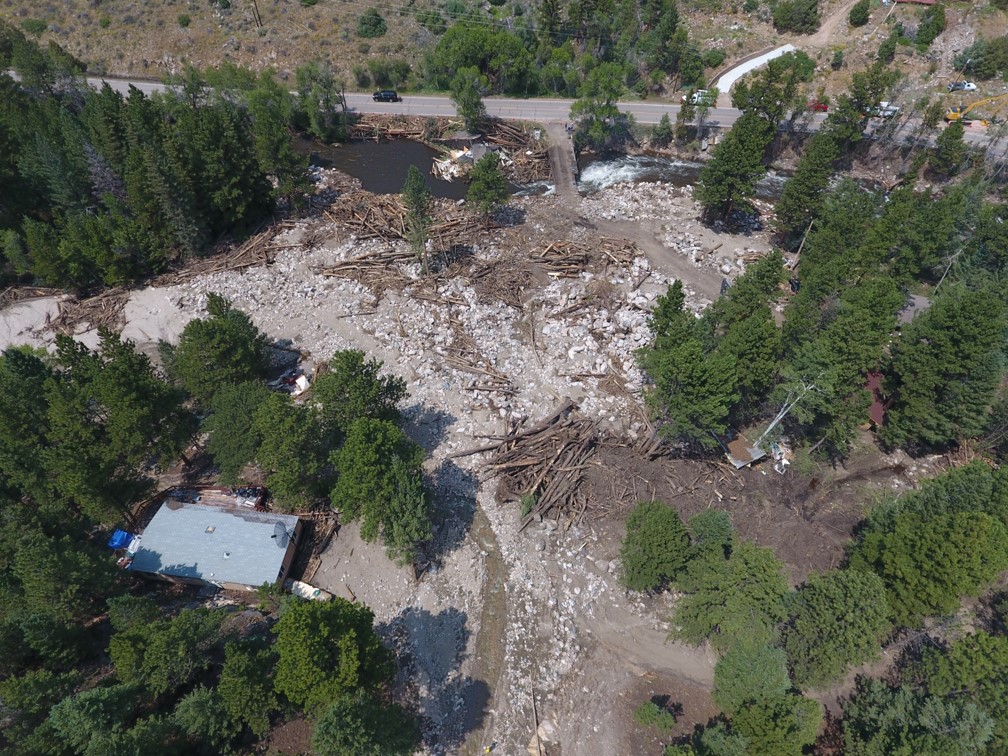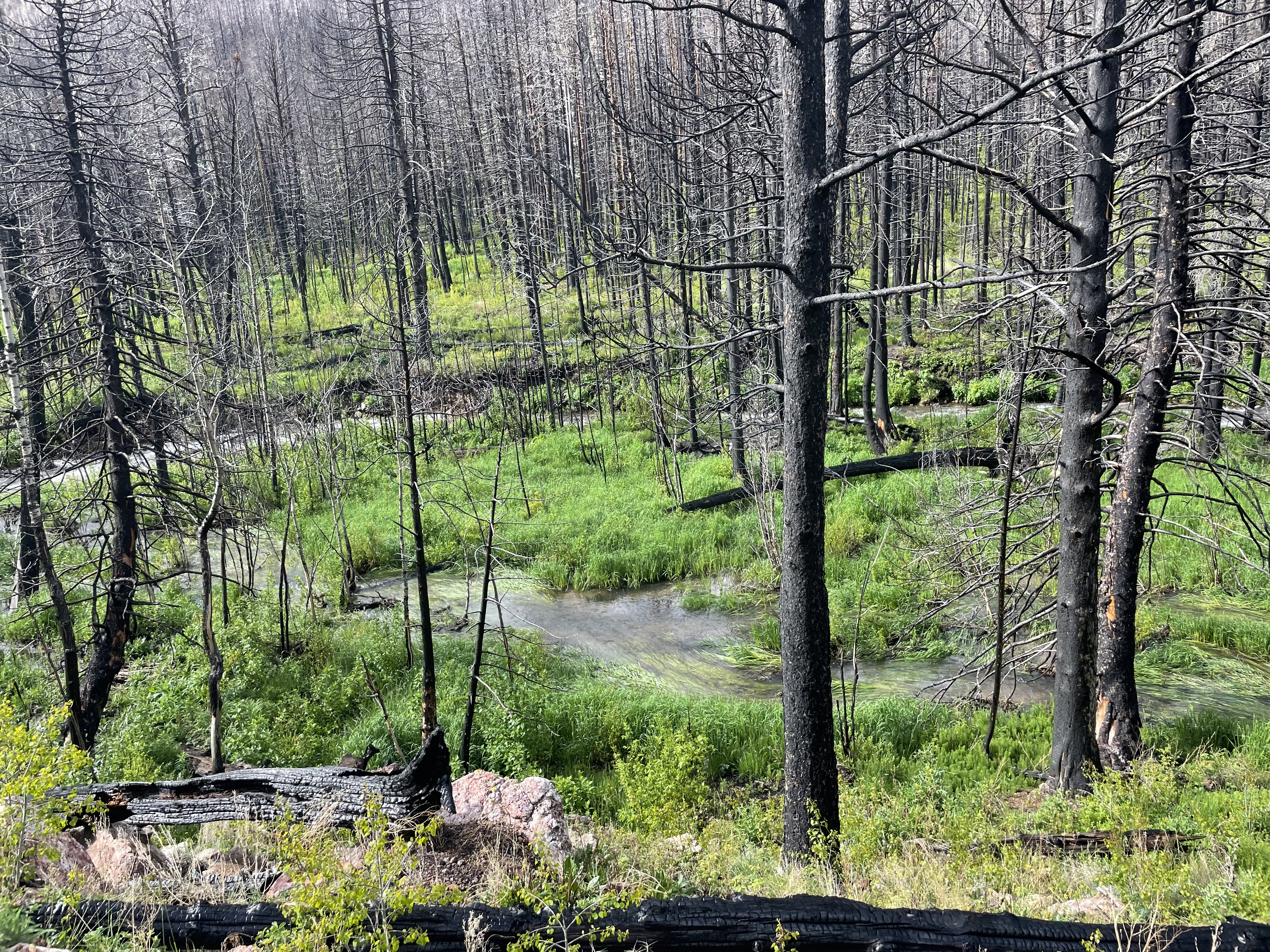River resilience to wildfire
Wildfire causes a cascade of disturbances that threaten water quality, human infrastructure, and life. We surveyed geomorphic, vegetation, and burn characteristics from the headwaters to the outlets of catchments that burned in the Cameron Peak fire in 2020s. Reach-scale characteristics rather than catchment-scale were best correlated with severity of flooding.
Water ponded behind beaver berms at the most resilient catchment, Jack’s Gulch
Our conceptualization of the wildfire disturbance cascade includes characteristics that drive and resist response to disturbance. As driving characteristics like burn extent or precipitation increase, we expect that a catchment would respond with a larger flood that causes more geomorphic change. This would indicate a less resilient catchment. The inverse is implied to be true, where we conceptulize resilience as increasing with increasing resisting characteristics.
Within most of our seven study catchments, we found that more resilient catchments were made up of reaches with lower slopes, wider floodplains, more beaver berms and logjams, and more multi-stem deciduous vegetation like willow and alder.
Read more about it in Geomorphology and on the Colorado Riparian Association Green Line Blog

